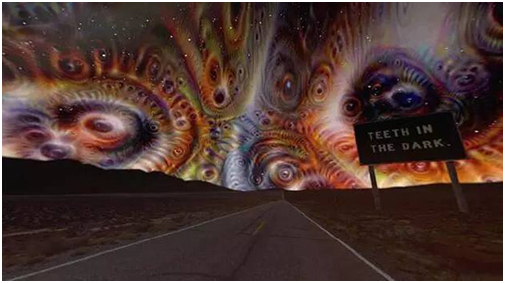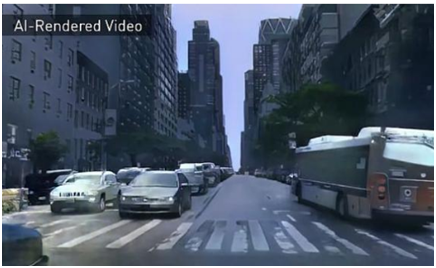Application of Artificial Neural Network and Virtual Reality Technology-Dr. Yao Wei
2020-12-16
In the past ten years, artificial intelligence and virtual reality technologies have developed rapidly. Artificial neural networks in the field of artificial intelligence are based on the structure of biological neural networks, mathematically abstract and simulate some of their basic characteristics, and are used to explore bionic models of human brain intelligent behavior. The combination of artificial neural network and virtual reality technology can achieve the effect of one plus one greater than two, which scientists have been expecting. At present, the main applications of the combination of artificial neural network and virtual reality technology are:
1. Facebook AI Research has launched an artificial neural network that can generate specific images based on text descriptions and accelerate the creation of virtual reality content. For example, enter "beach" and a picture of the beach under a blue sky will appear, and the sky of this picture of the beach is clouded. But if you enter "beach -clouds", the original picture will become a picture of a beach with no clouds under a blue sky. Finally, if the input is "sunset beach -clouds", a new orange-red sunset beach map will appear.
2. Special effects person Jonathan Sims used Google's neural network system Deep Dream to create a video called "Dreamtime" in 4 months, hoping to let the audience enter a dream. The main screen of "Dreamtime" is a road, and the sky is filled with kaleidoscope-like images of various deformed animals. The advertisement board on one side of the screen displays a series of dream scene descriptions, such as "children's voice" and "alone "Wait, as shown in Figure 2. To put it simply, the Deep Dream system is similar to the cognitive process of human beings: Scientists "feed" the system with massive amounts of picture information. After Deep Dream learns, they can "imagine" related images through the graphics in the pictures.

Figure 1 The main screen of "Dreamtime"
3. In 2016, in the Zheshang Bank branch renewal design project, SLDNXT helped Zheshang Bank’s flagship branch in Beijing Sanlitun to create a brand new one through “VR (virtual reality)”, “AR (augmented reality)” and “neuroscience”. The concept of outlets allows banks to establish contact with customers more effectively, as shown in Figure 2.

Figure 2 Zheshang Bank outlets
SLDNXT began to use the latest "VR" and "neuroscience" technologies to collect information. This is an innovative research aimed at verifying the following points:
• Use "VR" and "Neuroscience" to evaluate the validity of the concept before prototyping.
•Using "neural network" and "eye tracking" to evaluate and determine the effectiveness of the customer's true emotional response to the physical environment.
• The feasibility of using the "VR" hardware "EEG (electroencephalogram)" helmet.
• The validity of using the "EEG" test as part of the prototype population study.
•Based on feedback from target customers, use prototype concepts and "VR" experiences to compare the current and future environments.
• Insights based on measurement and "neuroscience" to enhance customer experience.
4. Nvidia has made some breakthroughs in artificial intelligence research, allowing developers to use models to create fully artificially synthesized, interactive 3D environments. Such models are trained in real-world videos. This technology can quickly create virtual worlds for games, cars, buildings, robots or virtual reality.
Nvidia researchers use neural networks to create synthetic 3D environments in real time. Compared with the current method that needs to model each object in the virtual world separately, NVIDIA's solution is cheaper and takes less time. This research produced a simple driving game that allows participants to navigate in an urban scene. All content in the scene is presented in an interactive manner using neural networks. The neural network converts the sketches of the 3D world generated by the traditional graphics engine Into a video, as shown in Figure 3. The neural network has learned to simulate real-world conditions, including lighting, materials, and dynamic performance.

Figure 3 NVIDIA uses neural networks to create a synthetic 3D environment in real time in driving games
Since the virtual scene is completely artificially synthesized, it is easy to edit, delete or add objects. The researchers said that Nvidia's Tensor Core graphics processing unit (GPU) made the demonstration possible. The working principle of the neural network is to first describe the scene, such as describing the location of the object and its general characteristics, such as whether a specific part of the image includes a car or a building, or the location of the edge of the object, and then the neural network will be based on its real The knowledge learned in World Video is rich in detailed information.
5. Google has used neural networks to analyze and inspect a large number of satellite images, and rely on deep learning to recognize online photos uploaded by Internet users and analyze faces or other objects in the photos. When analyzing ground photos and editing online maps in the Google Street View project, Google previously needed to use manual editing to ensure that the buildings and addresses corresponded one-to-one, which can now be done by neural networks.
In addition, in terms of virtual reality, Google’s virtual reality device Cardboard, and the 16-lens 360-degree panoramic camera jointly launched by Google and GoPro, all serve virtual reality. Based on satellite imagery and street view images, Google has established a 3D model of Prague, a famous European city. This also means that we will be able to experience the immersive Prague with virtual reality equipment before long. In addition, Cardboard launched a Google Expedition project, to explore far away through virtual reality, to some extent, to make people more immersive to understand the planet and the changes that have taken place on the planet.
